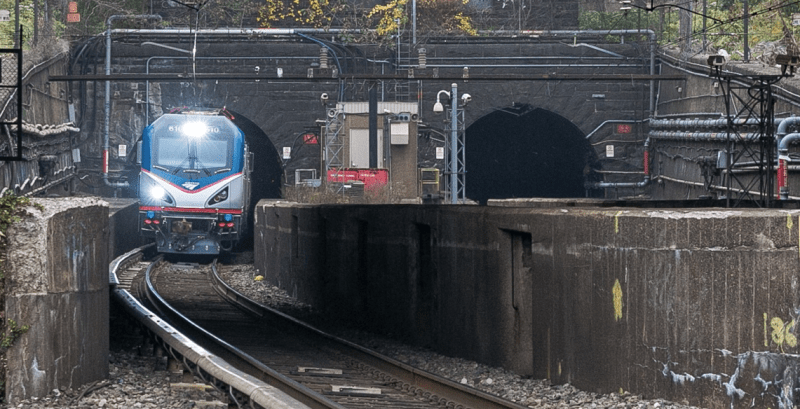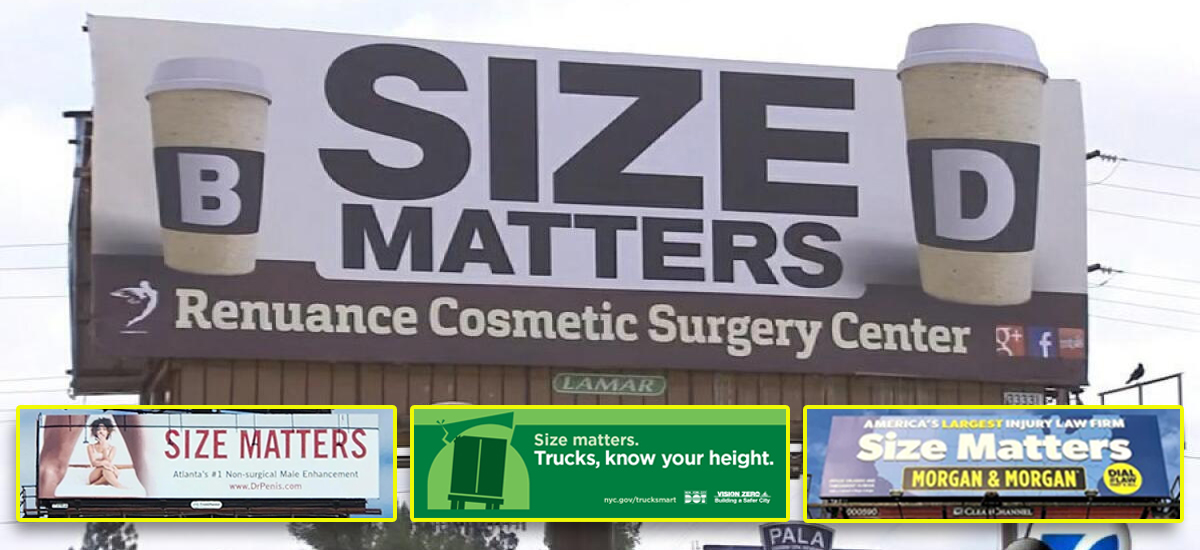What the L?
Gov. Cuomo rocked the regional transportation world this week when he cheered a report suggesting that the existing cross-Hudson tunnels between New Jersey and New York don't need a full shutdown to rebuild them, potentially throwing yet another wrench into the plan to build a new pair of tunnels to boost interstate rail capacity, a $13-billion piece of the Gateway Project.
It's the latest baffling twist in the decade-plus-long saga.
On Sunday, the governor suggested that a report done for the Port Authority by consultants London Bridge Associates showed that the existing century-old tunnels could be fixed while remaining in service — a strategy he used when he big-footed the experts last year and decided to fix a badly damaged L train tunnel without a full shutdown. The Cuomo (and outside consultant) plan relied on hanging power cables on racks on the tunnel walls and encasing broken concrete walls in Fiberglas rather than the more elaborate (and perhaps longer-lasting) repairs that had originally been planned.
The Cuomo scheme had one advantage: subway service could continue, albeit on a truncated schedule, while repairs were done, so perhaps it's no surprise that Cuomo is promoting the LBA report, which makes the case that repairs can be done on nights and weekends. And, critically for the future of the Gateway Project, the report suggests the repairs can be done without building another pair of tunnels first — a time-saving, but controversial, notion.
How well did Cuomo's bombshell go over? Really well ... unless you value the opinion of all of New Jersey's political leadership and Amtrak itself, who all suggested Cuomo had betrayed them.
The entire New Jersey political class and Amtrak are condemning a report, backed by Gov. Cuomo, that suggests NY and NJ can apply his L-train fix to Amtrak's Hudson River tunnel (https://t.co/KsaeJoiAgH) pic.twitter.com/P3ZVMgadUi
— Dana Rubinstein (@danarubinstein) November 24, 2020
Cuomo has said that a quicker fix for the existing tunnel doesn't have to compete with the need — and let's be clear, there is a need — for new tunnels to boost capacity. But let's also be real: New Jersey and Amtrak are concerned that if the tunnels are to be fixed while still serving commuters, political will will dry up for new tunnels; at the very least, more intense study by the federal government could result in an entirely new environmental impact statement, which would be yet another delay for the effort.
Amtrak also has a study of its own which suggested a dire need for two new tunnels, then a full shutdown and rebuild of the old tunnels.
Observers outside of the Dirty Jerz also question whether the London Bridge Associates plan is workable, given that the power cables that would be racked in the tunnels are different from the cables in the L train tunnel.
"My understanding is that this is different from the L train tunnel, that the electrical cables that run through it are much bigger and much heavier, they are the full electrical infrastructure for running the system, not just for the trains," said Felicia Park-Rogers, the director of regional infrastructure projects at the Tri-State Transportation Campaign. "They're bigger, they're heavier, they're more dangerous."
The Gateway Project is the eternal, deathless effort to increase train capacity across the Hudson River, which would make life less miserable for 200,000 daily New Jersey Transit and Amtrak riders. The idea dates back to the 1990s and has spanned multiple governors in New York and New Jersey; when Joe Biden is sworn in next January, the idea will land on the desk of a third U.S. president without having made any major progress.
The original idea, a pair of tunnels and a new commuter rail station near Penn Station, known as Access to the Region's Core, got approval and funding from the federal government in 2009. ARC was going to be financed in a three-way deal, with the federal government, the Port Authority and the New Jersey Turnpike Authority contributing to the $8.7 billion. But then-Gov. Chris Christie nixed the project in 2010 as a way to prove his Tea Party bonafides, after a dispute with the Obama administration over what he said were cost overrun issues and the federal government's insistence that New Jersey assume any overruns, but the federal government eventually put out a report disputing his claims.
The idea was reborn as the Gateway Project in 2011, pushed by then-Sen. Frank Lautenberg (D-N.J.) and Amtrak. In addition to the two new tunnels, Gateway was a wholesale sprucing up the cross-Hudson experience, with additional projects like replacing the Sawtooth Bridges in New Jersey, replacing the existing Portal Bridge with a new bridge that provided separate north and south tracks and expanding Penn Station to make use of the new capacity provided by the entire project.
Regional leaders saw Gateway as more important than ever after Hurricane Sandy damaged the existing tunnels in 2012, but funding questions limited the forward progress on the project through the end of the Obama administration. New York and New Jersey eventually agreed to fund part of the new tunnel project with Amtrak, but President Trump then refused to release federal funds for tunnel construction in 2018, and the proposal's Final Environmental Impact Statement has sat in a drawer somewhere in the bowels of the US DOT ever since, waiting for approval.
"The application is in," said one source close to the project. "And it's likely a new administration will act on it."
Politically, Cuomo seems to stand alone on the idea. Sen. Chuck Schumer's office did not respond to a question about whether the LBA report could derail Gateway, but a spokesperson for the senator sent a recent press release highlighting Schumer's all-caps plea, "SENATOR URGES BIDEN ADMIN TO SIGN OFF ON GATEWAY ONCE SWORN IN."
Unlock Gateway funding. That’s the call from @SenSchumer. He says the money for the new rail project is there, but President Trump has been holding it hostage. When Biden becomes Prez, Schumer expects Gateway will get the signature it needs. @wcbs880 pic.twitter.com/rJRfst3pnX
— Peter Haskell (@peterhaskell880) November 16, 2020
President-elect Biden is an explicit supporter of the Gateway Project, having said there was "no greater infrastructure priority in the country than the Gateway Project" in 2017, and calling for a "new, safer Hudson River Tunnel" on his transition page, which suggests some small degree of interest in building the two new tunnels.
The governor has been ambivalent to Gateway in the past, such as a comment he made in 2015 objecting to New York paying for any of the tunnel construction by saying, "It's not my tunnel." The state is also facing a significant budget crunch right now, and even in 2018 the governor said he didn't want to pay any more than the state's $3.25 billion contribution, so the report could be a last-ditch effort to paying for the tunnel.
There's no question that Gov. Cuomo is fond of himself and his own outside-the-box thinking when it comes to transit repairs. When asked about the London Bridge Associates report, Cuomo bragged to a reporter, "I do take particular pleasure in hearing you endorse the now accepted L train repair methodology." And Cuomo was pleased that the MTA used methods from the L train repair method to patch up the F train tunnel between Brooklyn and Manhattan, giving more credence to the patch-and-dash idea. The governor also had his own outside experts take a look at the East Side Access project (years into the project going on under his watch). He also once said, "Forget your transit experts" in response to critics of the LaGuardia AirTrain.
But Cuomo's own Penn South megaproject makes less sense without Gateway's increased capacity, and the governor called on President Trump to fund Gateway in May. Just last Monday, Cuomo called the approval of the Gateway Project one of the many issues requiring federal intervention that are just as important as congestion pricing, despite potentially undermining the case for that funding with this report.
All of this makes Cuomo's decision to prop up the report, and potentially take on a Chris Christie-esque role just before the project could get out of purgatory, a heel turn worthy of the WWE, for its suddenness, bad timing and the pure incomprehensibility of it all.
"We're this close, we're 60 days from the Biden administration, that has for all intents and purposes has said this project is a go," said Park-Rogers.






